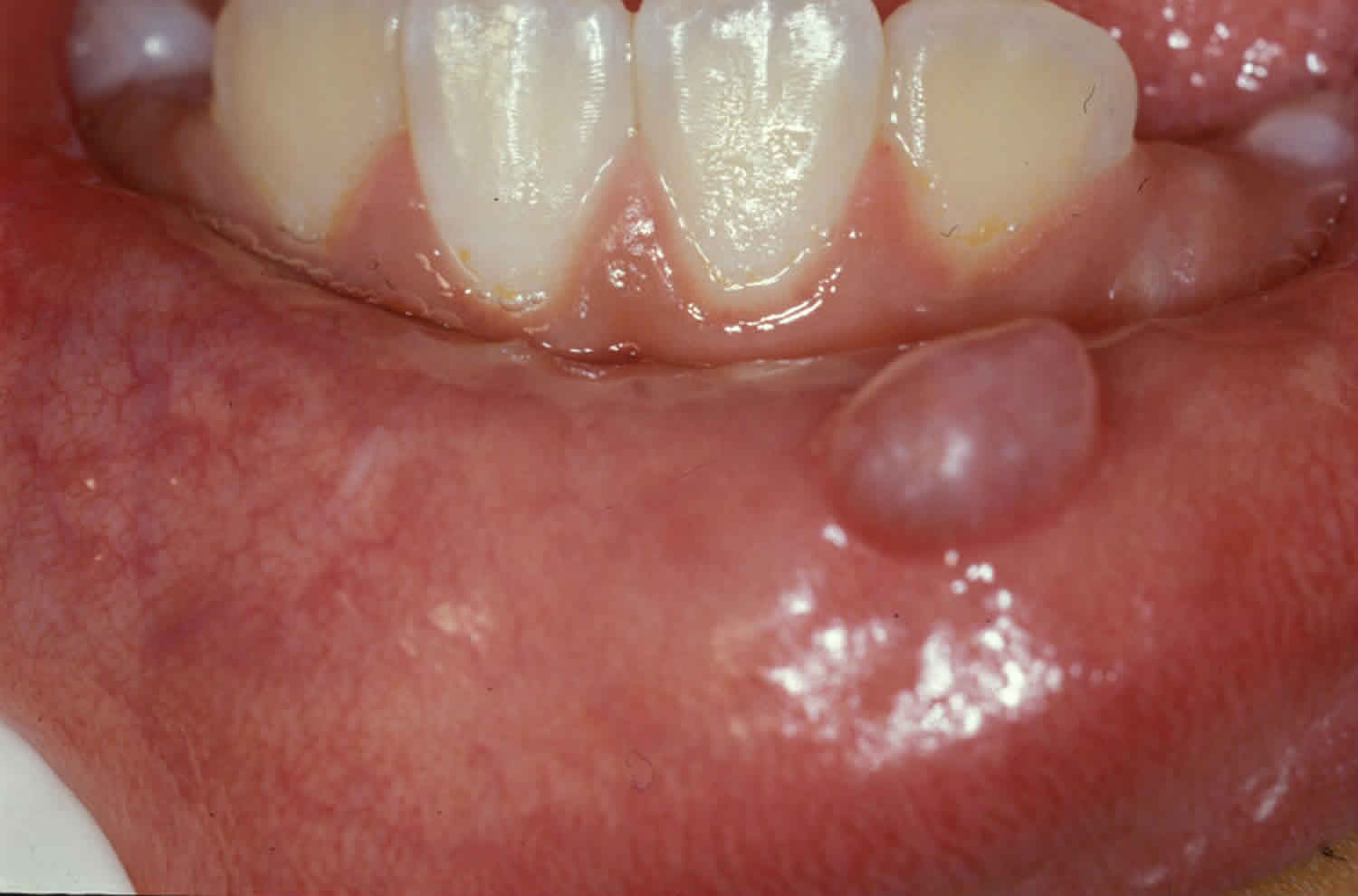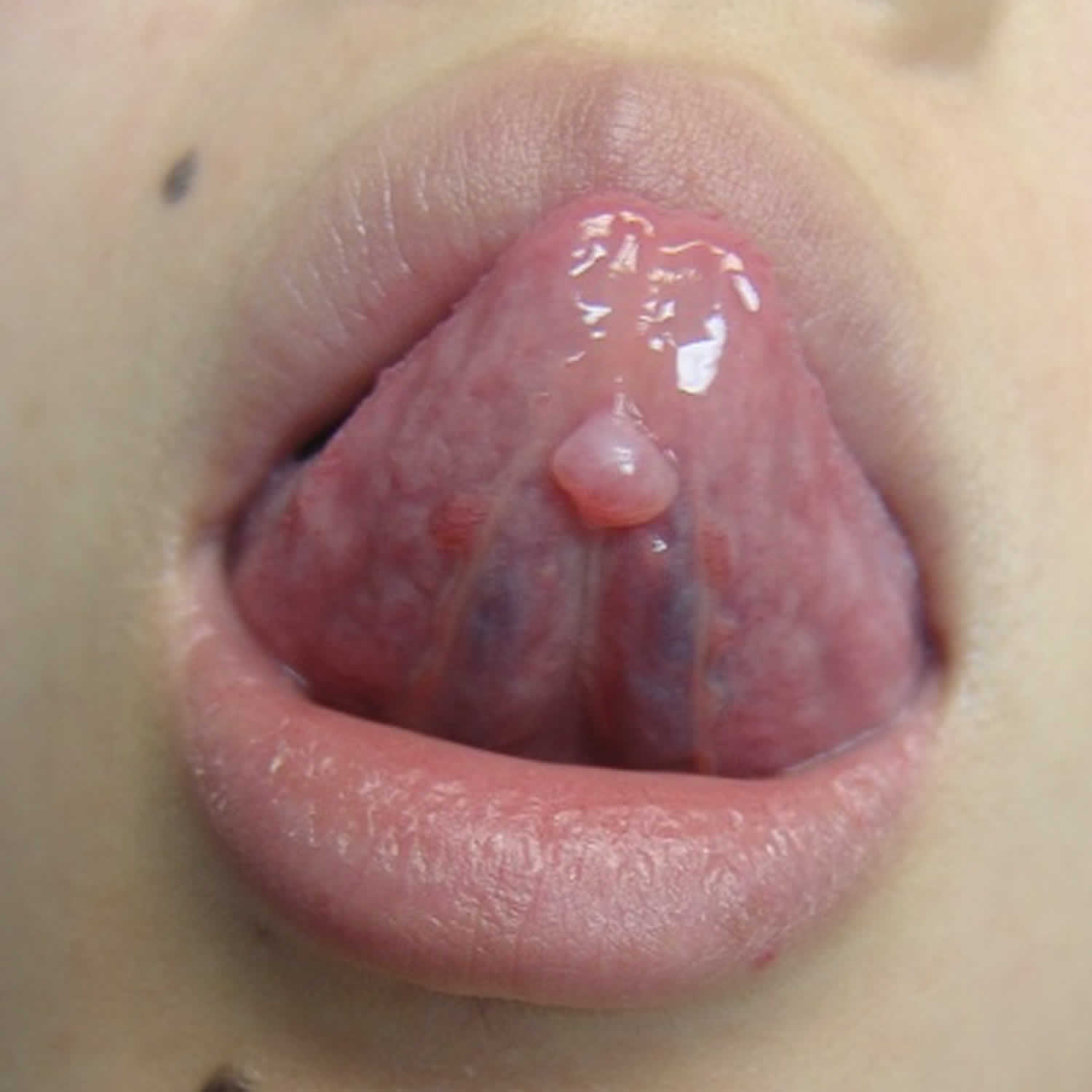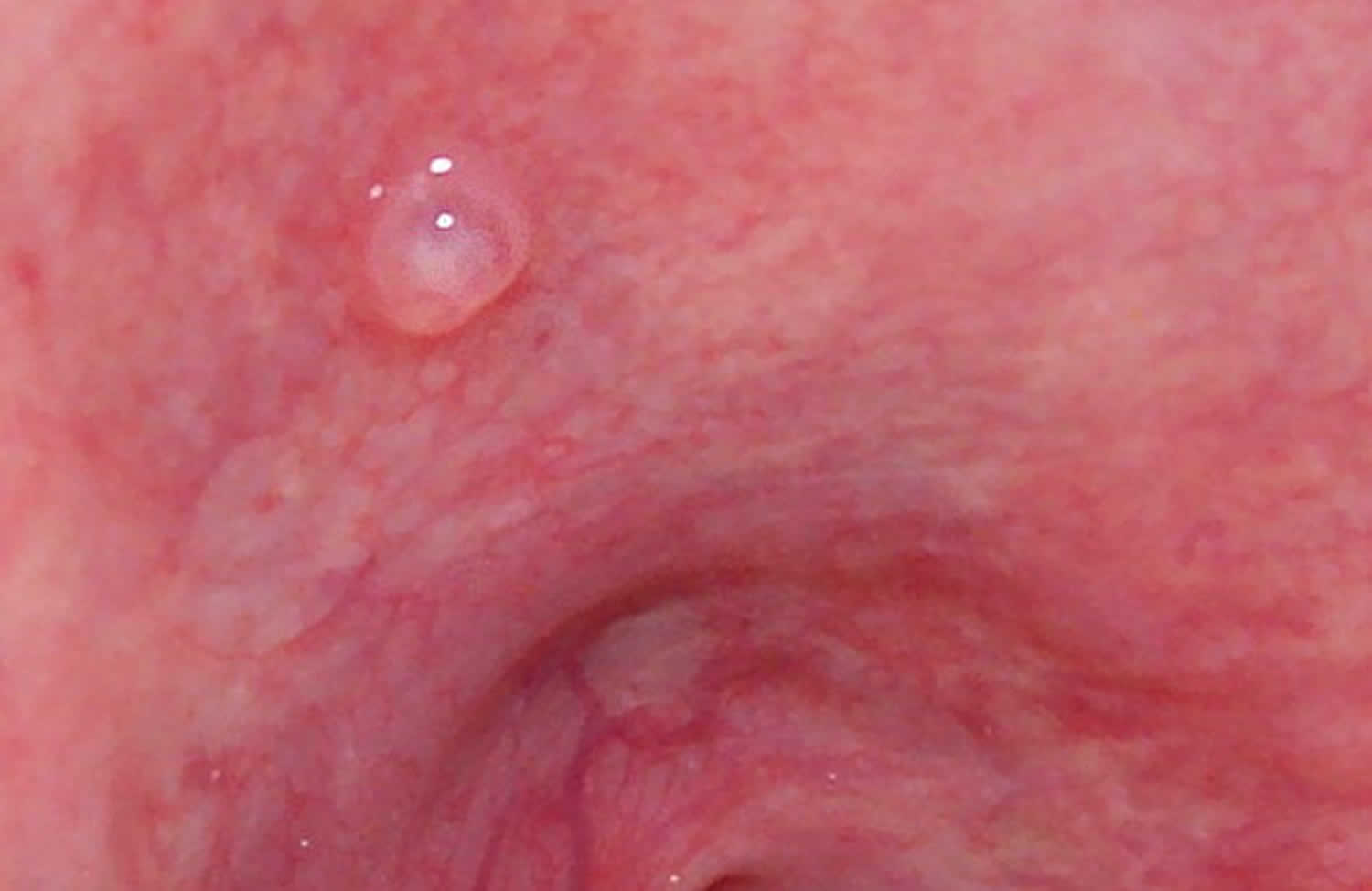Oral mucocele
Mucocele also called mucous cyst or mucous retention cyst, is a painless and harmless, fluid-containing (cyst-like) swelling of your lip or mouth lining (mucosa) due to mucus from the small salivary glands of the mouth leaking into the soft tissue, usually from injury (trauma) or blockage of the gland. A similar lesion, the mucus-retention cyst, occurs from blockage and backup of saliva in the gland.
Mucoceles or mucous cysts most often appear near salivary gland openings (ducts). Common sites and causes of cysts include:
- Inner surface of the upper or lower lip, inside the cheeks, bottom surface of the tongue. These are called mucoceles. They are often caused by lip biting, lip sucking, or other trauma.
- Floor of the mouth. These are called ranula. They are caused by blockage of the salivary glands under the tongue.
Oral mucocele form when mucus or saliva escapes into surrounding tissues and a lining of granulation or connective tissue is formed to create a smooth, soft round fluid-filled lump. Mucocele most commonly occur on the inner surface of the lower lip (75% of cases) but may also appear on the floor of the mouth (in this region they are known as ranulae) or on the gingiva (gums), buccal mucosa (inner lining of the cheeks) and tongue.
A mucocele or mucous cyst often can be left alone. Many mucoceles will go away on their own in 3–6 weeks. It usually will rupture on its own. Mucus-retention cysts often last longer. Avoid the habit of chewing or sucking on the lips or cheek when these lesions are present.
If mucocele returns, it may need to be removed. See your doctor if the bump persists for over 2 months or if it is growing, bleeding, interfering with talking or chewing, or painful.
To remove a mucocele, your doctor may perform any of the following:
- Freezing the mucous cyst (cryotherapy)
- Laser treatment
- Surgery to cut out the mucocele
A ranula is usually removed using laser or surgery. The best outcome is removing both the cyst and the gland that caused the cyst.
To prevent infection and damage to the tissue, DO NOT try to open the sac yourself. Treatment should only be done by your doctor. Oral surgeons and some dentists can remove the sac.
Contact your doctor or dentist if you:
- Notice a cyst or mass in your mouth
- Have difficulty swallowing or talking
These may be a sign of more serious problem, such as mouth cancer.
Figure 1. Mucocele under tongue
Figure 2. Mucocele roof of mouth
Figure 3. Mucocele on the floor of the mouth (ranula)
Mucocele causes
Mucocele are usually the result of trauma in the mouth, which injures the tiny salivary ducts inside of the lip. Injury or rupture of these microscopic excretory ducts leads to an accumulation of mucus inside of the connective tissue of the lip. Lip biting or the sucking action drawing the mucous membranes of the lower lip between the teeth are thought to be common causes. Often the sufferer is not aware of having had an injury.
Who’s at risk of mucocele?
Mucoceles occur most commonly in children or young adults. There may be a history of trauma or lip biting. The similar-appearing mucus-retention cysts occur more often in older adults and without any history of preceding trauma. Tartar-control toothpaste might be the cause in some mucoceles.
Oral mucocele symptoms
Mucoceles usually occur on the lower lip and inner part of the cheek, as these are frequent areas of mouth trauma, but they can occur anywhere inside the mouth. Mucocele tend to be transparent, mucous-filled dome-shaped lesions. A mucocele is usually a single bump with a slight bluish or normal skin color, varying in size from 1/2 to 1 inch, and it is soft and painless. A mucocele may appear suddenly, while a mucus-retention cyst may slowly enlarge.
Symptoms of mucoceles include:
- Usually painless, but can be bothersome because you’re aware of the bumps in your mouth.
- Often appears clear, bluish or pink, soft, smooth, round and dome-shaped.
- Vary in size up to 1 cm in diameter.
- May break open on their own, but may recur.
Symptoms of mucous cyst under tongue or ranula include:
- Usually painless swelling on the floor of the mouth below the tongue.
- Often appears bluish and dome-shaped.
- If the mucocele cyst is large, chewing, swallowing, talking may be affected.
- If the mucocele cyst grows into the neck muscle, breathing can stop. This is a medical emergency.
Single or multiple lesions may occur and can range from 1-15 mm in diameter. Superficial lesions take on a bluish to translucent color because of the thin layer of epithelium covering the bluish capillaries. Deeper lesions are usually the same color as the rest of the lip as they are covered with a thicker layer of tissue. Bleeding into the lesion may cause a bright red color and may occasionally resemble a hemangioma. Sometimes the surface of the lesion may become white, rough and scaly due to repeated sucking on the lesion.
In most cases of superficial mucocele lesions tend to persist for several days or weeks, rupture spontaneously (usually while eating), and heal a few days after they rupture. They often recur over and over. The repeated occurrence of mucocele may lead to a permanent lump on the inner surface of the lip.
Mucocele are painless but bothersome lesions because people are so aware of the irregularities in the mouth.
Mucocele complications
Mucocele complications may include:
- Return of the mucocele
- Injury of nearby tissues during removal of a mucous cyst
Mucocele diagnosis
Your health care provider can usually diagnose a mucocele or ranula simply by looking at it. Other tests that may be done include:
- Biopsy. A biopsy of the mucocele lesion may be performed to rule out other suspected mucocutaneous diseases.
- Ultrasound
- CT scan, usually for ranula that has grown into the neck
Mucocele treatment
Superficial mucoceles usually resolve spontaneously and require no specific treatment, especially in infants and young children. In a recent retrospective study, approximately 44% of mucoceles in children spontaneously resolved after an average of three months. Evening primrose oil has been used with varying degrees of success in a limited number of patients with multiple superficial mucoceles. However, mucoceles recurred within a few months after treatment stopped.
If superficial mucoceles frequently recur and become problematic to the patient, treatment options include surgical removal, creation of a pouch (marsupialization) inside of the lesion, freezing (cryosurgery), laser ablation, and micro-marsupialization. These treatment options are also used to treat deeper lesions.
If adequate and complete surgical excision is achieved with adjacent minor salivary glands removed or transacted, there should be no recurrence of mucoceles.








